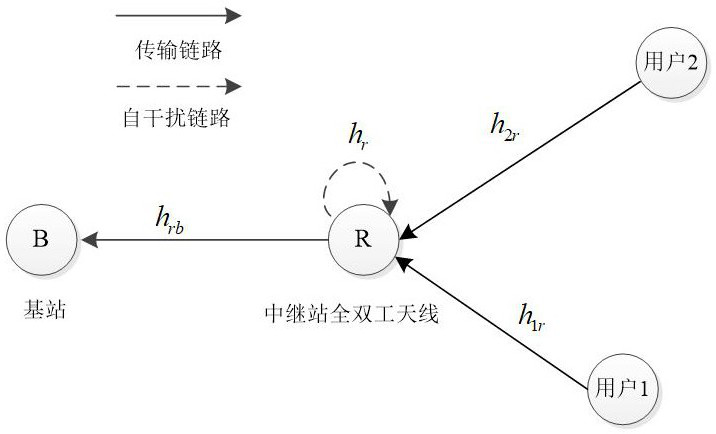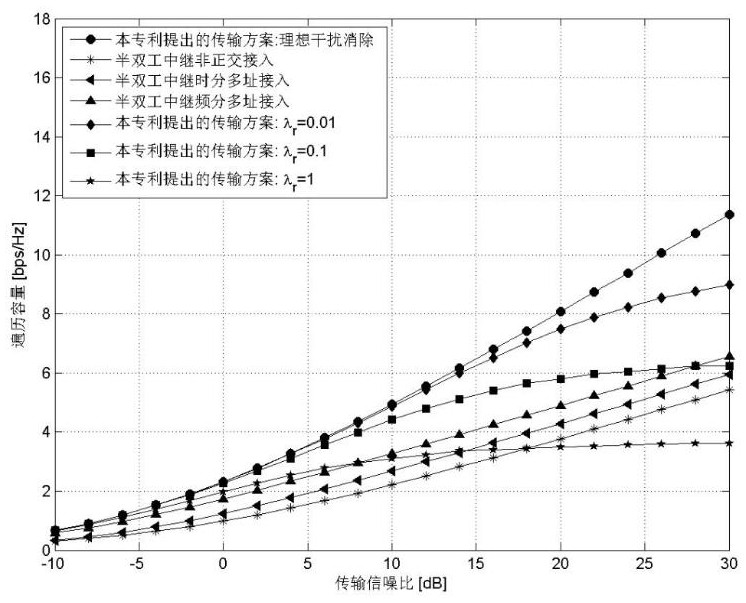Uplink relay full duplex transmission mechanism model based on non-orthogonality
A transmission mechanism, full-duplex technology, applied in duplex signal operation, electrical components, wireless communication, etc., can solve problems such as low spectrum efficiency
- Summary
- Abstract
- Description
- Claims
- Application Information
AI Technical Summary
Problems solved by technology
Method used
Image
Examples
Embodiment Construction
[0016] Such as figure 1 As shown, a non-orthogonal based uplink relay full-duplex transmission mechanism model, the specific implementation steps are as follows:
[0017] Uplink user 1 and user 2 allocate transmission power β by using the self-generated channel to the relay station 1 P t with beta 2 P t , where β 1 +β 2 = 1, β 1 >β 2 . It is assumed that neither of the two users can directly communicate with the base station, thus, cooperative transmission of the relay station is required. Without loss of generality, it is also assumed that user 1 is closer to the relay station than user 2 is to the relay station.
[0018] The relay station is a full-duplex antenna, so full-duplex transmission can be implemented. The two-user signals from the uplink received by the receiving end of the full-duplex antenna can be expressed as:
[0019]
[0020] where h 1r [n], h 2r [n] with h r [n] represent user 1 and relay, user 2 and relay and self-interference channel coeff...
PUM
 Login to View More
Login to View More Abstract
Description
Claims
Application Information
 Login to View More
Login to View More - R&D
- Intellectual Property
- Life Sciences
- Materials
- Tech Scout
- Unparalleled Data Quality
- Higher Quality Content
- 60% Fewer Hallucinations
Browse by: Latest US Patents, China's latest patents, Technical Efficacy Thesaurus, Application Domain, Technology Topic, Popular Technical Reports.
© 2025 PatSnap. All rights reserved.Legal|Privacy policy|Modern Slavery Act Transparency Statement|Sitemap|About US| Contact US: help@patsnap.com



